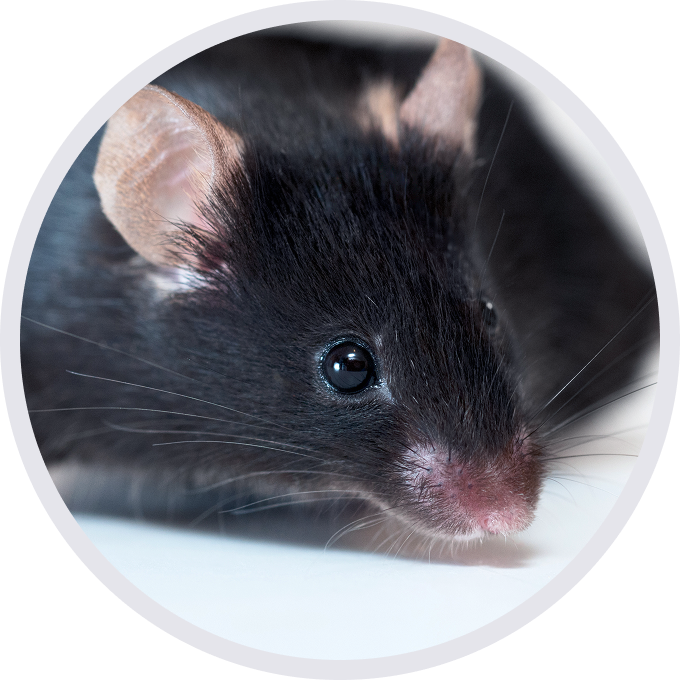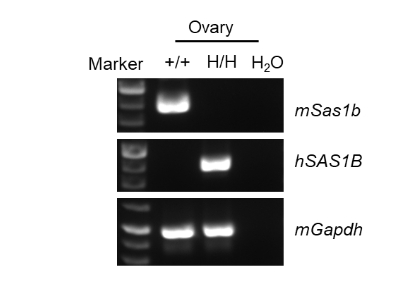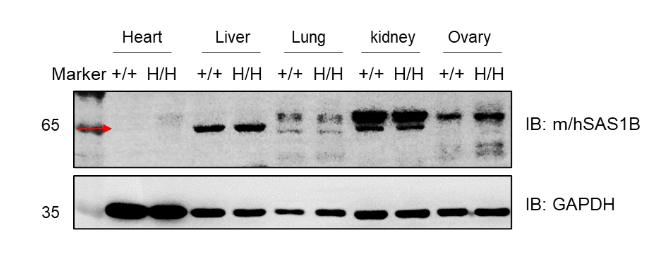


C57BL/6N-Astltm1(ASTL)Bcgen/Bcgen • 112722
| Product name | B-hSAS1B mice |
|---|---|
| Catalog number | 112722 |
| Strain name | C57BL/6N-Astltm1(ASTL)Bcgen/Bcgen |
| Strain background | C57BL/6N |
| NCBI gene ID | 215095 |
| Aliases | OOMD11, OZEMA11, SAS1B |
| Application | This product is used for pharmacodynamics and safety evaluation of drugs. |
Gene targeting strategy for B-hSAS1B mice. The exons 6-9 of mouse Sas1b gene that encode extracellular domain and 3’UTR are replaced by human counterparts in B-hSAS1B mice. The genomic region of mouse Sas1b gene that encodes signal peptide, transmembrane domain and cytoplasmic portion is retained. The promoter, 5’UTR region of the mouse gene are also retained. The chimeric SAS1B expression is driven by endogenous mouse Sas1b promoter, while mouse Sas1b gene transcription and translation will be disrupted.

Species specific analysis of SAS1B gene expression in wild-type C57BL/6N mice and homozygous humanized B-hSAS1B mice by RT-PCR. Ovary was collected from wild-type C57BL/6N mice (+/+) and homozygous B-hSAS1B mice (H/H). Mouse Sas1b mRNA was detectable only in wild-type C57BL/6N mice. Human SAS1B mRNA was detectable only in homozygous B-hSAS1B mice, but not in wild-type C57BL/6N mice.

Strain specific SAS1B expression analysis in homozygous B-hSAS1B mice by western blot. Heart, liver, lung and kidney were collected from wild-type C57BL/6N mice (+/+) and homozygous B-hSAS1B mice (H/H), and analyzed by western blot with anti-SAS1B antibody(R&D,AF8549). m/hSAS1B was detectable in kidney, lung(weak expression) and liver of wild-type C57BL/6N mice (+/+) and homozygous B-hSAS1B mice.